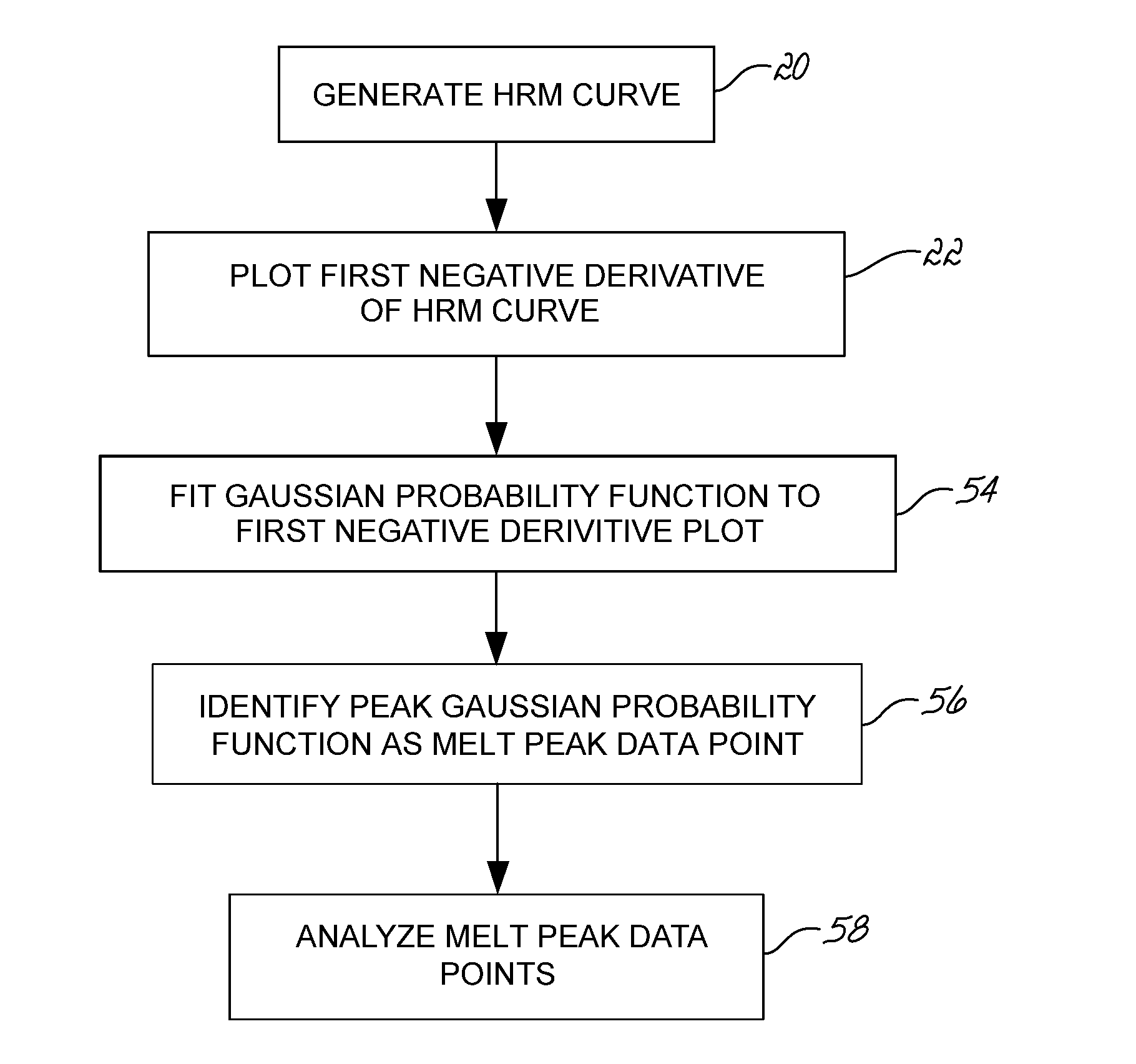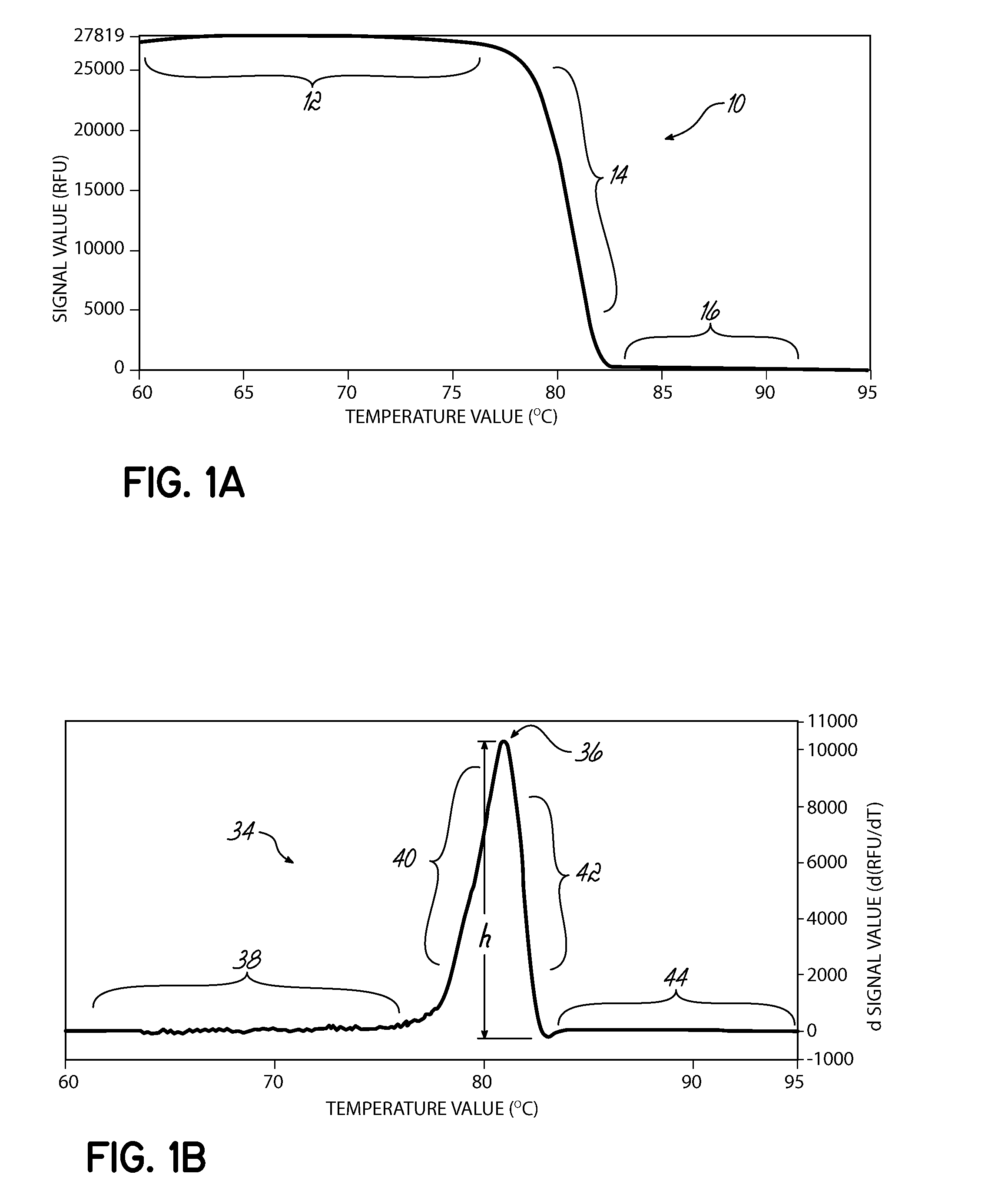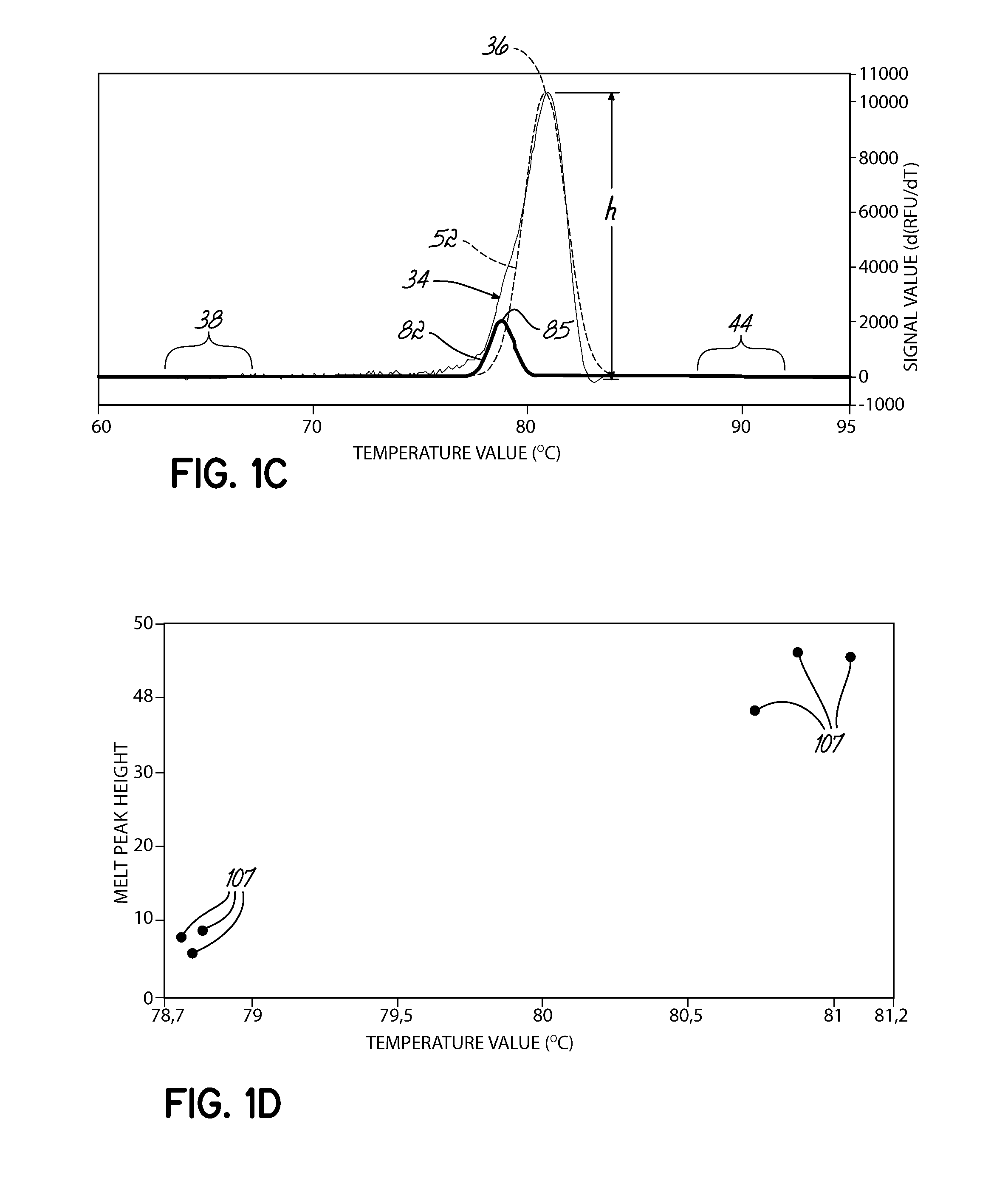Methods and systems for high resolution melt analysis of a nucleic acid sequence
a nucleic acid sequence and high-resolution technology, applied in the field of double-stranded nucleic acid analysis, can solve the problems of insufficient information on melt temperature, inability to distinguish small changes in melt temperature of double-stranded nucleic acid, etc., and achieve the effect of greatly enhancing the discrimination between melt temperatures of double-stranded nucleic acids
- Summary
- Abstract
- Description
- Claims
- Application Information
AI Technical Summary
Benefits of technology
Problems solved by technology
Method used
Image
Examples
example 1
[0080]A set of samples representing two homogenous samples types and one heterogeneous mix of the two was run in a PikoReal instrument and analyzed by the melt peak method. For this example, olfactory receptor, family 10, subfamily J, member 5 (OR10J5) amplicons having a single nucleotide polymorphism (G or A) identified as rs4656837 were amplified using a standard PCR protocol in the presence of SYBR Green. After amplification, the samples were slowly heated and fluorescence measured at regular intervals. As shown in FIG. 14A, HRM curves 300 were generated for 18 samples and the exponential decay removed. The HRM curves 300 were normalized based on user identified areas of the saturation region 302 and background region 304. FIG. 14B illustrates the normalized HRM curves 304. FIG. 14C illustrates the first negative derivative plots 320 from the normalized HRM curves of FIG. 14B. FIG. 14D illustrates a scatter plot of the melt peak data points identified from the first negative deri...
example 2
[0082]In this example, the peak width was plotted to further discriminate the signal values of the HRM melt curves. When mixed populations of double-stranded nucleic acids were present in the same sample undergoing HRM analysis, they tended to make the resulting HRM curve wider, especially when the difference in the melting temperatures of the individual probes were greater. As observed with the data presented below, this method was found to be particularly useful when analyzing multiplexed reactions.
[0083]For this example, ToxA and ToxB were amplified using a standard PCR protocol in the presence two Solaris primers and fluorescent probes for ToxA and ToxB in C. difficile. FIG. 15A shows data from a qPCR and HRM analysis experiment wherein each probe was used by itself or in combination with the other probe. The data demonstrate that while the ToxA+ToxB curve had a similar melting temperature to the ToxA probe by itself, it is easily distinguished by the peak height (FIG. 15B) and ...
PUM
| Property | Measurement | Unit |
|---|---|---|
| temperatures | aaaaa | aaaaa |
| melting temperature | aaaaa | aaaaa |
| melting temperature | aaaaa | aaaaa |
Abstract
Description
Claims
Application Information
 Login to View More
Login to View More - R&D
- Intellectual Property
- Life Sciences
- Materials
- Tech Scout
- Unparalleled Data Quality
- Higher Quality Content
- 60% Fewer Hallucinations
Browse by: Latest US Patents, China's latest patents, Technical Efficacy Thesaurus, Application Domain, Technology Topic, Popular Technical Reports.
© 2025 PatSnap. All rights reserved.Legal|Privacy policy|Modern Slavery Act Transparency Statement|Sitemap|About US| Contact US: help@patsnap.com



